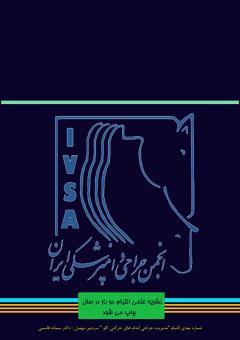Fetal Dystocia 2. Dystocia Due to Faults of Presentation, Dystocia Due to Twins, Dystocia Due to Fetomaternal Disproportion
Subject Areas : Clinical Complications and their Treatments
Saghar Alizadeh Ghamsari
1
,
Niloufar Tashakkori
2
![]() ,
nima farzaneh
3
,
nima farzaneh
3
![]()
1 - Department of Clinical Sciences, Faculty of Veterinary Medicine, Ferdowsi University of Mashhad, Mashhad, Iran
2 - Department of Clinical Sciences, Faculty of Veterinary Medicine, Ferdowsi University of Mashhad, Mashhad, Iran
3 - Department of Clinical Sciences, Faculty of Veterinary Medicine, Ferdowsi University of Mashhad, Mashhad, I.
Keywords: Cattle, Dystocia, Twining, Feto-Maternal Disproportion,
Abstract :
The aim of manipulative procedures in the monotocous species must always be to ensure that the fetus is in normal disposition before attempting delivery. Correction of defects of presentation, position, and posture can be achieved only by intrauterine manipulation of the fetus. Retropulsion of the fetus into the uterus is essential for repositioning it. After diagnosing the cause of dystocia and deciding on a plan of action, the obstetrician should consider whether the available facilities are appropriate, and whether the equipment is adequate to carry out the treatment successfully. In severe forms of dystocia, the veterinarian should always seek the assistance of a professional colleague and consider whether it might be appropriate to transport the animal to a place with hospital facilities, provided that the animal is in a fit state to travel. Obstetrical manipulation per vaginam should be performed as cleanly as possible. It is impossible to perform them aseptically because there will inevitably be some contamination.
Noakes DE, Parkinson TJ, England GC. Arthur's Veterinary Reproduction and Obstetrics-E-Book: Elsevier Health Sciences; 2018
Larsen RE. Veterinary obstetrics and genital diseases (Theriogenology) by S.J. Roberts (ed.); 981 pages, $72.00. 1986, 3rd edition. Published by the author, Woodstock, VT 05091. Distributed by David and Charles Inc., North Pomfret, VT 05053. Theriogenology. 1986;26(5):551-2
Mee J, Berry D, Cromie A. Risk factors for calving assistance and dystocia in pasture-based Holstein–Friesian heifers and cows in Ireland. The Veterinary Journal. 2011;187(2):189-94
Olson K, Cassell B, McAllister A, Washburn S. Dystocia, stillbirth, gestation length, and birth weight in Holstein, Jersey, and reciprocal crosses from a planned experiment. Journal of dairy science. 2009;92(12):6167-75
Echternkamp S, Thallman R, Cushman R, Allan M, Gregory K. Increased calf production in cattle selected for twin ovulations. Journal of Animal Science. 2007;85(12):3239-48
Bell M, Roberts D. Effect of twinning on the feed intake, performance and health of dairy cows. Livestock Science. 2007;107(2-3):274-81
Ko J, Ruble M. Using maternal pelvis size and fetal hoof circumference to predict calving difficulty in beef cattle. Veterinary medicine (USA). 1990
Colburn D, Deutscher GH, Nielsen MK, Adams DC. Effects of sire, dam traits, calf traits, and environment on dystocia and subsequent reproduction of two-year-old heifers. Journal of Animal Science. 1997;75(6):1452-60
Hiew MW, Megahed AA, Townsend JR, Singleton WL, Constable PD. Clinical utility of calf front hoof circumference and maternal intrapelvic area in predicting dystocia in 103 late gestation Holstein-Friesian heifers and cows. Theriogenology. 2016;85(3):384-95


